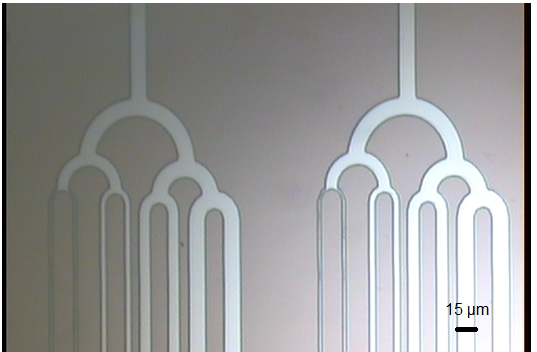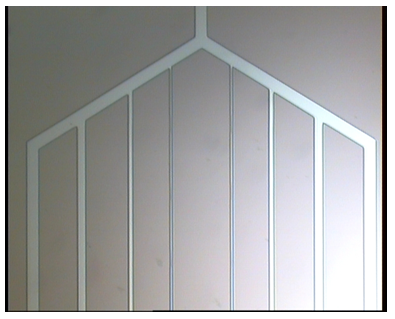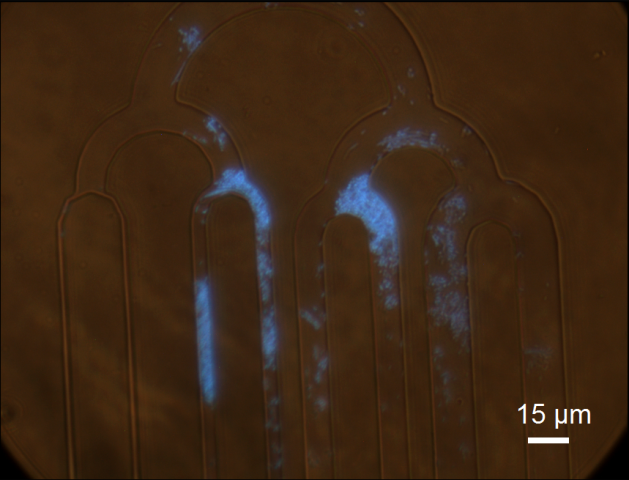| Members: | Prof. Stella W. Pang (EE) - Project Leader
Prof. Raymond H.W. Lam (MBE) Prof. Patrick K.H. Lee (SEE) |
Being able to manipulate single molecule or single cell is desirable to precisely determine their biochemical behavior and how they will respond to external stimuli. The critical step in single-molecule or single-cell analysis is the formation of micrometer- or nanometer-channels in a fluidic microsystem to direct their movement. It is also important to introduce control components to separate molecules or cells, transport them to specific locations, and immobilize or collect them for further analysis. A fluidic microsystem with various channel dimensions and layouts will be developed. In addition, interdigitated electrode arrays will be integrated to move and position molecules or cells along the channels for separation or mixing with constant velocity and low input voltage.



| (a) | (b) |